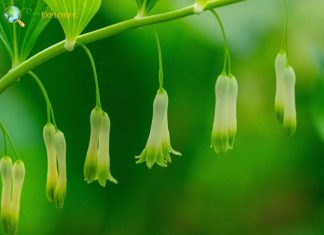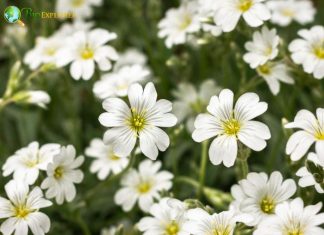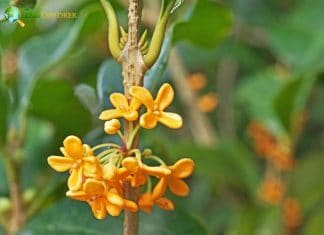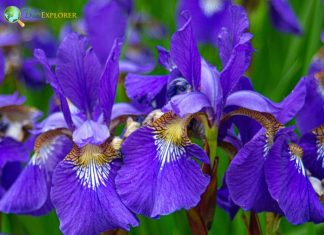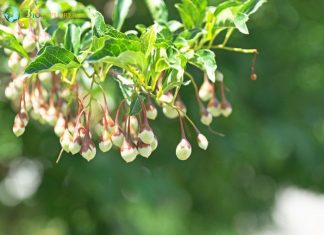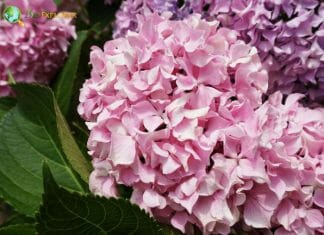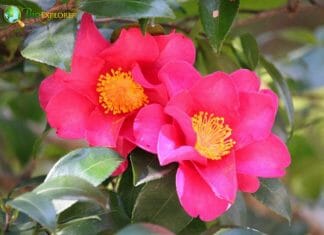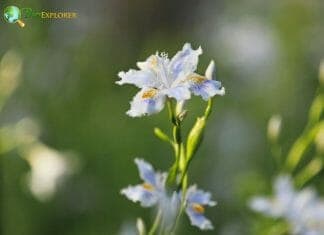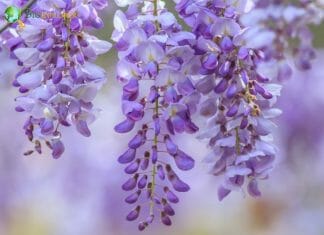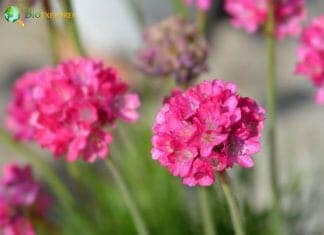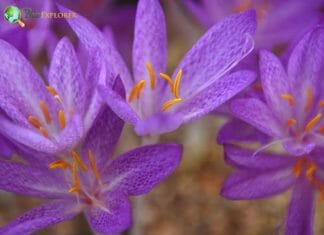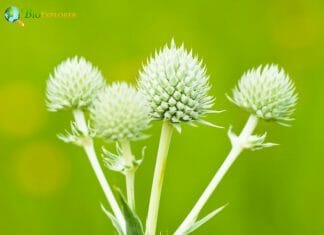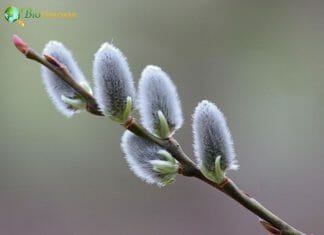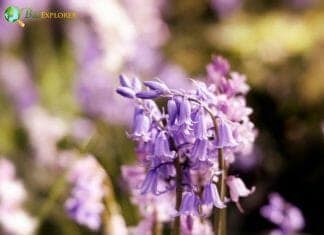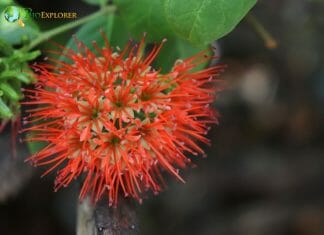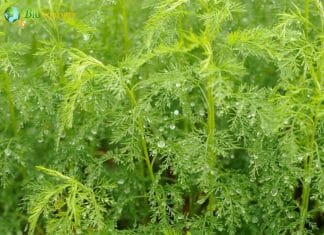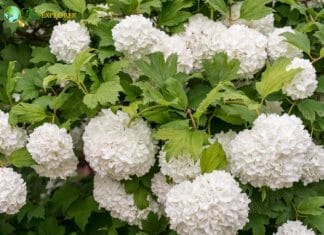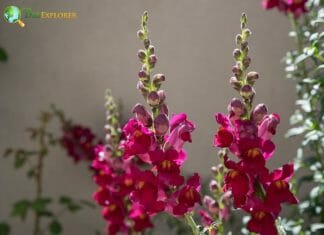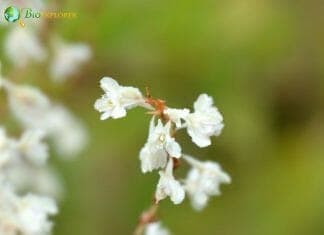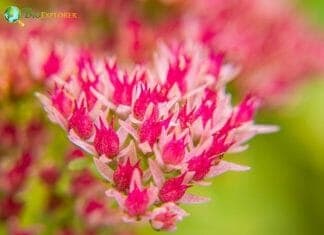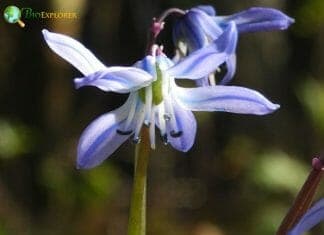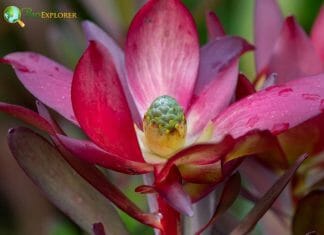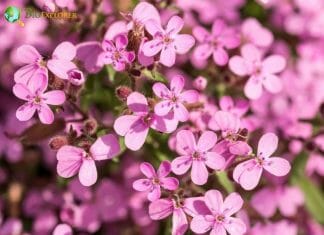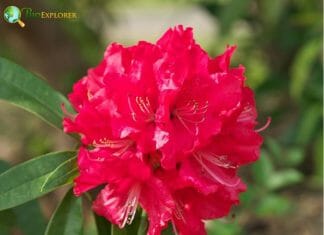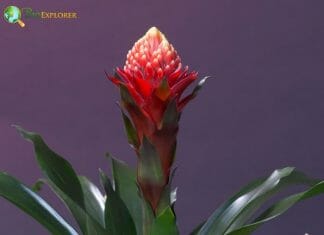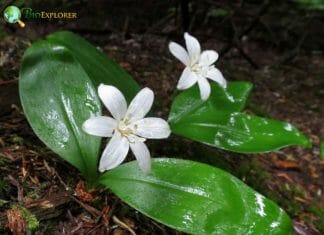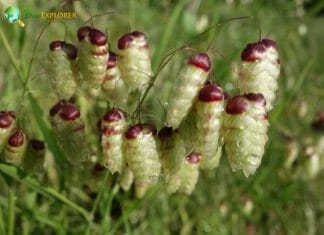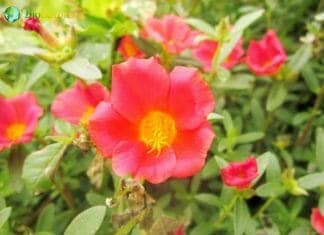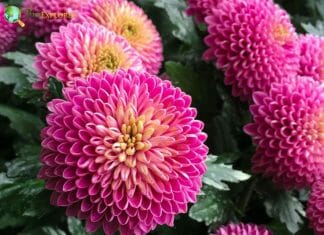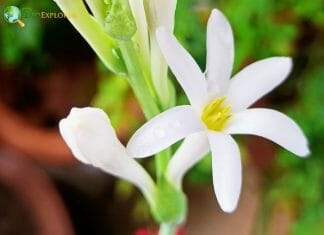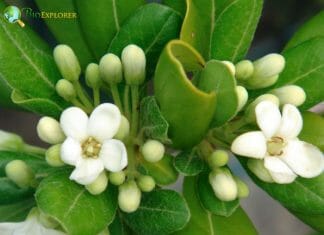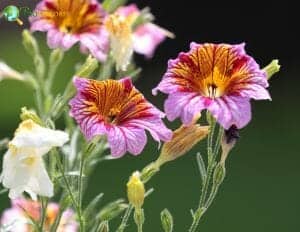Solomon’s Seal
Flower Type: Perennials
Polygonatum biflorum, commonly known as Solomon's seal, is a classic garden shade plant that gives garden beds an architectural component thanks to its arched stems. There are around 60 species in this group of perennial grasses in the Asparagaceae (asparagus) family.
Snow in Summer
Flower Type: Perennials
Snow-in-summer (Cerastium tomentosum) offers a solid option for adding botanical beauty to retaining wall crevices and stones in a rock garden. Additional flowering usually occurs in smaller quantities all through the summer.
Japanese Orange Osmanthus
Flower Type: Shrubs/Trees
Japanese Orange Osmanthus is an evergreen shrub or tree that produces clusters of flowers with a powerful apricot fragrance. The flowers of the Japanese Osmanthus are tiny in axillary clusters and signify truth and a noble person in Japan.
Blood-Red Iris
Flower Type: Perennials
Iris sanguinea is a rhizomatous angiosperm that can grow to a height of 0.5 to 1 meter and a spread of 0.1-0.5 meters. The Iris flower signifies wisdom, hope, trust, and courage. The Iris flower is considered the flower for the 25th wedding anniversary.
Japanese Snowbell
Flower Type: Trees
The Japanese Snowbell is a deciduous tree that can grow to 15-25 feet. The leaves of Styrax japonica are alternate and simple. They are broad-elliptic to elliptic-oblong. These leaves are medium to dark green with a measurement of 2.5-9 cm. long and 1.3 -4 cm wide.
Japanese Bigleaf Hydrangea
Flower Type: Shrubs
Bigleaf Hydrangea is a deciduous shrub native to Japan that can grow to 7 ft tall. The flowers of the lacecup Hydrangea are attractive large mophead, making it a popular landscape Japanese plant.
Japanese Iris
Flower Type: Perennials
Iris japonica is a rhizomatous plant with a height of 0.75 to 1 foot and a spread of 1 to 1.5 feet that can grow in forest margins and wet grasslands. The Japanese Iris is named after the Greek goddess "Iris" because of its beauty. The name Iris also means rainbow.
Sea Thrift
Flower Type: Perennials
Armeria maritima, the sea thrift, sea pink, or common thrift, is a plant species in the family Plumbaginaceae. The genus has more than 100 species, mainly native to the Mediterranean region. It's a popular garden flower and is sold worldwide as a cut and garden flower.
Saffron
The saffron flower is single and terminal, purple, and comprises 6 petals, 3 stamens, and a style that ends with 3 orange-red stigmas. Unlike other blossoms of the same genus, saffron blossoms do not close overnight. Saffron is a spice extracted from the flower of Crocus sativus, also known as saffron crocus.
Rattlesnake
Flower Type: Perennials
Commonly known as the rattlesnake or Calathea insignis, Calathea lancifolia is a tropical rhizomatous evergreen perennial native to Brazilian rainforests. Consequently, the flowers rarely appear on indoor plants. Currently, Calathea is a genus that includes about 60 species of flowering plants in the family Marantaceae.
Pussy Willow
Flower Type: Shrubs/Trees
Pussy Willow (Salix discolor) is a name for many smaller species in the Salix genus (sallows and willows) when their hairy catkins are young at the beginning of spring. Salix discolor, the American willow or glaucous willow, is one of the two species commonly known as pussy willow.
Throatwort
Flower Type: Annuals/Perennials
Intricate and delicate, Throatwort (Trachelium caeruleum) dazzles with its thick cushions of blue-violet flowers and gives any garden or flower arrangement an elegant, lace-like charm. The flowers come in shades of white, green, pink, purple, and blue, but the flowers of the white varieties age more quickly.
Tassel flower
Flower Type: Annuals
The Tassel flower is a small, intriguing plant on the front edge, producing tiny scarlet-orange pompoms that appear to float in mid-air when viewed from a distance. Also known as Cupid's shaving brush or Emilia, the tassel flower is a genus of over 100 species in the Asteraceae family found primarily in the tropics of the Old World.
Southernwood
Flower Type: Trees
Southernwood may seem like a minimal spread plant, but it has toured the world in the past few centuries. Despite its name, Southernwood is not a tree. Artemisia belongs to the family Asteraceae, which includes about 2,000 flowering plants. This plant is native to Africa and Eurasia but naturalized in scattered locations across North America.
Snapdragon
Flower Type: Annuals
Snapdragons (Antirrhinum majus) are an annual classic cultivated for generations. This annual excellent season's flowers go perfectly with violas and pansies. Around 20 species in the genus are native to the Mediterranean, from Morocco and Portugal to southern France, Syria, and Turkey.
Silver Lace Vine
Silver Lace Vine (Polygonum aubertii) is a popular but controversial climbing plant because of its vigorous growth habit. This drought-tolerant vine wraps around porch pillars, fences, or pergolas. Polygonum is a genus of around 130 species of flowering plants in the Polygonaceae (knotweed and buckwheat) family
Sedum
Flower Type: Shrubs
In botanical gardens or gardening stores, you may have found plants named "Sedum" that are so different that you wonder if they are related to one another. The genus Sedum is part of the large Crassulaceae (stonecrops) family named for their ability to grow in cold, dry areas with little water.
Scille
Flower Type: Perennials
The Scilla genus includes around 80 species of bulbous herbaceous perennial plants in the Asparagaceae family, a subfamily of the Scilloideae. Most flowers bloom in early spring, but some bloom in fall. Several species of Scilla are popular as ornamental garden plants. Each flower has 6 petal-like tepals, and each tepal has a distinctive dark blue midrib (median stripe).
Safari Sunset
Flower Type: Shrubs
The Leucadendron 'Safari Sunset' is a favorite of gardeners and florists is an evergreen multi-stemmed shrub with vivid, deep red bracts forming exceptionally long stalks (over 1m or 3 feet) at the tips. Perfect for use in easy-care gardens and aquifers, this tall, vigorous Leucadendron is an excellent choice for hedges, screens, or as an exhibition plant.
Rock Soapwort
Flower Type: Perennials
Saponaria ocymoides, commonly referred to as rock soapwort, is a semi-perennial herbaceous perennial plant native to the rocky slopes of the mountains of south-central and southwest Europe.
Rhododendron
Flower Type: Shrubs/Trees
Rhododendron is the genus and common name for a diverse and large group of small trees and woody shrubs in the flowering Ericaceae family. There are over 1000 rhododendrons native to Australia, North America, Asia, and Europe. The trees can be evergreen or deciduous
Quesnelia
Quesnelia is a genus of flowering plants in the Bromeliaceae family, a subfamily of the Bromelioideae. The genus consists of about 20 species of plants that are native to southeastern and eastern Brazil. Quesnelia is a perfect landscaping bromeliad with its vibrant flower in various colors.
Queens Cup
Flower Type: Perennials
Queen's Cup (Clintonia uniflora) is a perennial plant of the liliaceae (lily) family native to western North America's mountainous regions. There are 5 species of Clintonia, 1 in Asia and 4 in North America.
Quaking Grass
The quaking grass (Briza media) attracts attention in every garden with its dainty inflorescences. Also known as cowquake, quaking grass belongs to the Poaceae (grass) family. t is native to Europe, North America, and Asia Minor. There are between 22 and 31 species in the genus Briza.
Purslane
Flower Type: Annuals
Purslane (Portulaca grandiflora) is a heat and drought tolerant annual plant native to the hot, arid plains of Uruguay, Argentina, and southern Brazil. Purslane is among the 3 most important species of portulaca. It has several common names, including rock rose, the sun rose, Mexican rose, eleven o'clock, and rose moss.
Pompom Chrysanthemum
Flower Type: Annuals
Pompom blooms are annual flowering plants better known as chrysanthemums. The flowers are known as pompoms because their fullness makes them look like the pompoms used by cheerleaders. Pompom flowers are native to China. Flowers are sometimes seen in ancient Chinese art.
Polianthes tuberosa
Flower Type: Perennials
Polianthes tuberosa, commonly known as tuberose, is possibly native to Mexico. It's considered iconic and has a long cultural history dating back to pre-Columbian times. The Agave genus (Agavaceae) includes about 200 species.
Pittosporum
Flower Type: Shrubs/Trees
Pittosporum is one of many evergreen trees or shrubs primarily native to New Zealand and Australia, making up the Pittosporaceae family's Pittosporum genus. Also known as Australian laurel, Pittosporum is mainly planted as ornamental plants in temperate regions
Painted Tongue
Flower Type: Annuals/Perennials
The relative of the petunia, the painted tongue (Salpiglossis sinuata), catches the eye with its spectacular trumpet-shaped blooms in shades of deep violet, gold, and magenta.


